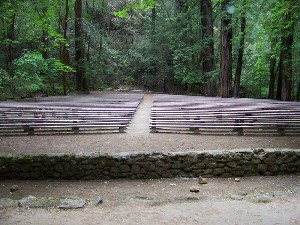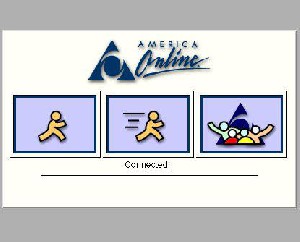Psychic Connections
It is said that religion is humanity’s attempt to determine a pattern in the randomness of the universe as they experience it. Certainly my own path to Paganism is solidly based on my experiences, which included events for which I had no better label than psychic: telepathic communication with another human, empathic communication with another human, and empathic communication with non-human living beings. One of my great validators, when exploring Pagan belief systems, was discovering that others experienced such events, shared them without prejudice, and held working world-views that included patterns where such events were possible. Given the frequency of the feeling of “coming home” expressed by my Pagan correspondents both online and off, I’m not unique in this regard.
Such psychic events are among the strongest type of emotional connection we feel with others and with our world. That sense of connectedness underlies much of neopagan and earth-based religions, and is often experienced in more than logical ways; our detractors don’t call us “tree-huggers” unjustly. In my pre-Pagan days I felt vivid psychic connections: the music-hunger of a grove of redwoods, the emotional turmoil of a sibling’s puberty, the voice of a lover declaring his love in so many words—while his lips remained unmoving. Unsurprising to the Pagan community, such experiences are, at best, classed with ghost stories and other presumed fictions in the mundane world we also inhabit.
Viewpoint from center stage (stone wall in foreground bounds the orchestra pit) at the Forest Theater,
Armstrong Redwoods State Park, Guerneville, California, USA.
It was here that my favorite redwood grove pressured me for a musical encore after I tried the acoustics of the Forest Theater during a wintertime visit.
Accepting such psychic—or parapsychic or paranormal—events is nothing new in the neoPagan subculture. I still recall my sense of discovery, of understanding when I first read P. E. I. Bonewits’ carefully expounded “switchboard” hypothesis describing the as-yet-undiscovered frequency of electromagnetic or related energies that carry the information we call psychic or paranormal.[1]
My dual studies in Pagan practice and scientific paranormal research have reinforced my view that Bonewits’ hypothesis provides a sound if still intuitive basis for the workings of psi phenomena that has yet to be bettered. But I’ve read little yet, in either Pagan or scientific venues, that discuss the potential of “cyberspace” for exploring the subtler types of psychic connection. In the flurry of connectivity and international networking that characterizes the Net, I find this gap astonishing.
Such online psychic experiments as can be found on the Internet today are largely confined to prediction and intention experiments.[2] However, in an example run by the University of Amsterdam in the early 1990s, one first expended some effort to intuit an image, then described one’s image by writing a short essay and answering a series of true–false statements about the image, and finally got to view a photograph (the experimental “target”) for comparison, along with a numerical score. To me, this cyber-linked example of remote viewing barely scratches the surface of the technological potential for psychic events.
Body English and Other Red Herrings
Common explanations for empathic experiences lean heavily on the non-verbal communication at which the human animal, like all animals, excels. Those subtle cues collectively called “body English,” both facial and structural, can communicate considerable information about the emotional state of someone who speaks not a word. Not only does such unspoken information communicate, it can be communicated unknowingly along a chain of people. In an example of my personal knowledge that dates from 1959, an engineer in a major research firm entered an open-plan office full of other engineers, and found the atmosphere so tangibly bleak that she asked the department secretary what was up. The other woman agreed that things felt dismal but could not account for it. The following day several hundred people were laid off abruptly, in a surprise management decision.
Typical example of a late 1950s open-plan office workspace
In a post-mortem discussion, the two women hypothesized that body English had somehow communicated the impending bad news on an emotional level, producing a negative atmosphere without any concrete information being passed. Although one or both women may have had a psychic (empathic) experience, the body-English explanation is at least equally likely, and is less upsetting to people afraid of psi. As Dr. Charles Tart (academic parapsychological researcher) described more than a decade ago,
Unacknowledged fears of psi can create unconsciously motivated behaviors that inhibit and/or distort the operation of psi in the laboratory. Observations suggest that unacknowledged fear of psi is widespread among parapsychologists, as well as others.[3]
Preferring common-sense explanations for communication events—when circumstances support them—I also tend to assume that I’ve read body English rather than experienced a psychic phenomena. Even on the telephone, one has the advantage of vocal tones, hesitations, and non- words—the body English of the voice—to offset psychic explanations of otherwise inexplicable communication between individuals. When your mother calls you and you know she’s got bad news from the first “Hello,” is that psychic or not? Pragmatically speaking, I’d say not. You just know that voice better than you do your own.
Cyber Connections
While I’m not a formal psychic experimenter, my personal grimoire, like many of ours, is as much a magical lab notebook as anything else. I note prophetic dreams, tarot readings of especial significance, and other psychic events that appear to me to include magico–psychic information. By documenting a deja vu event the first time I dream it, I get great personal satisfaction and validation when I see it in the flesh the second time—often years later—and have written evidence when and what I saw. Such documentation is difficult when it comes to psychic events that involve real-time psychic communication. However, cyberspace has given me anecdotal evidence of such subtle events.
Although a long-time techie, I was slow arriving in cyberspace by Silicon Valley standards. I signed onto America Online in early 1993, and discovered an existing, thriving Pagan community there, even at a time when AOL subscribership was limited to 300,000 members in the U.S. and was not yet linked to the larger Internet. Tucked into a corner of the Religion-and-Ethics forum, a small multi-faceted message board overflowed its boundaries daily trying to cover the lumped “metaphysical/new age/occult/pagan” topics. The tolerant fundamentalist-Christian forum moderator had a Pagan sub-moderator who quietly encouraged our successful sub-forum along with his other duties. A weekly chat existed even then, in AOL’s People Connection forum (quite unrelated to the R&E forum), entitled White Magick, that provided a real-time forum for Pagans of all stripes discuss topics to their taste… and wherein they routinely bumped noses with the ever-curious and occasionally brimstone-breathing hoi polloi. And in another quadrant of AOL cyberspace, the Tips and Advice forum featured a “Crystal Ball” board for psychic readings—which repeatedly petitioned the Pagan AOL-ers for readers, since AOL and the Crystal Ball board both grew like weeds to produce an ever-impatient backlog.
AOL sign-on screen, early 1990s.
At the time, I was practicing Wicca solely as a solitary, and had no opportunities to exercise psychic experiments in the physical world. The online Pagan community contributed to my growth enormously. I was petitioned (and succumbed) to two pleas: one to read tarot in the Crystal Ball forum, and another to facilitate a Religion-and-Ethics–based Pagan chat—which successfully spun off chat after chat due primarily to AOL’s booming population and continued Pagan networking online. (By 1997, there existed an entire Pagan & Wiccan sub-region of the re-titled Religion & Beliefs Forum, with its own conference room, several libraries, and hundreds of message boards.)
For the traditional year and a day, I worked as AOL remote staff in these two capacities, interacting in real time with thousands of people at distances ranging from two to 3,500 miles. The people I “spoke” to covered the spectrum of humanity: Pagans and Christians and Hindus, educated and ignorant and studying, technologically adept and clueless, all ages and sexes and backgrounds. I made connections in all sorts of ways, ways that I’d never dreamed of.
I played at cybersex (another topic!) until interactive pornography began to pall, experiencing an online infatuation that required a physical meeting to put to rest. Before that episode, I’d been at best dubious about the concept of a psychic connection. What I recall most vividly from that time is the dearth of usable information in Pagan literature on the subject of functional psychic management. Bonewits provided me understanding but no guidance; I found some usable hints in Murry Hope[4] and borrowed snippets from a dozen other marginally useless volumes to help me break the psychic link I had inadvertently formed (that online infatuation…).
I quit working the real-time Tarot chat after the night a potential suicide was our last reading of a session. Although AOL legalities demanded I follow procedure in advising the party to get offline and call a crisis hotline, a comment I made during that exchange began an email conversation of some months. Several months later, the other party began to turn his email messages back towards the “might as well be dead.” By that time, I knew him fairly well, but my heart was literally in my throat the day I tossed a virtual bucket of cold water on renewed outpourings of self-pity. Thank the gods, he took it well and positively, accepting that his own choices had as much to do with the unfortunate outcome of many past events as did any “uncaring providence.”
As an AOL official host, I learned to know within seconds if a new arrival (in a chat room) represented potential trouble or was simply clueless. Evangelical witnessers really interrupt any conversation, but worse if twenty Pagans and Pagan-friendlies then feel obliged to rebut the intrusive advice all at once. The curious but clueless could be gently directed to places where their questions got answered without interrupting expensive online time (in 1994, AOL cost $4/hour after one’s subscribed five monthly hours plus telephone bills—if your dial-up connection was a toll call, you could easily run up a thousand dollar total in a single month).
One night after a chat concluded, I exchanged greetings with a regular attendee who usually lurked during the discussions. For no specific reason, I found myself driven to ask whether she was all right—to discover that, while she knew she had exophthalmia (“pop-eye,” the result of Graves’ disease), she’d awakened the night before with one eye slid out of its socket. Reflexively, she had replaced it even as panicked emotions set in. A trip to her doctor in the morning had reassured her intellectually. Nonetheless, attending the Pagan Discussion Group that evening, she continued to be thoroughly anxious and troubled. In that moment, I stopped wondering whether cyber-empathy was just my pipe dream or wild hypothesis, and began acting on the presumption that empathy and other psychic communication can and does occur with the remote and largely impersonal link provided by the Internet.
Marty Feldman, 1934-1982, had Graves’ disease, which caused his exophthalmia.
Since that time, I have successfully “sent energy” down its perhaps peculiar medium to other Pagans, without specific notice, and had at least half of them comment within ten seconds on an unusual sensation of warmth or tingling. Not only has my online experience of empathy led me to attempt this kind of magical working/psychic event, it has helped me learn techniques that work in the everyday world. I now use directed energy for healing efforts, sense the energy flows when my writing is successful, and sense unspoken information that moves in my vicinity.
As yet, I have not seen any evidence of cyber-psychic communications in the research literature. That may be due to limited research budgets, problematic experiment design, the usual infinite delays in publishing research results, or a simple failure of insight by investigators. Nonetheless, cyberspace in all its variety provides another venue for Pagans and psychics wishing to explore this largely unexplored set of magical tools.
This article was originally written in 1995 and revised in 1997. It was significantly edited and updated for the Wiccan Rede Online late in 2014.
About the author: Deb Snavely began her occult studies shortly after her college graduation: divination, healing, herbs, folklore. Initiated into the Wicca in 1995, she currently leads a coven in the south Puget Sound area of Washington state in the Pacific Northwest of the USA. Retired medically from an award-winning technical writing career, she applies her available energies to her work as a priestess and healer.
Bibliography
Bonewits, P.E.I., Real Magic, 3rd edition, Weiser, 1989
Hope, Murry, Practical Techniques of Psychic Self-Defense, St. Martin’s Press, 1986
Charles Tart Parapsychology Blog, Library of Articles;
Institute of Noetic Sciences, Psi Arcade (ongoing online experiements);
Princeton Engineering Anomalies Research (PEAR) Laboratory;
Journal of Scientific Exploration;
International Consciousness Research Laboratory;
[1] Real Magic, P. E. I. Bonewits, 3rd ed.,1989 Samuel Weiser, Inc.
[2] http://www.noetic.org/research/project/psi-arcade/
[3] “Acknowledging and Dealing with the Fear of Psi,” Journal of the American Society for Psychical Research, 1984, volume 78, pp. 133–143, Charles T. Tart, (http://blog.paradigm-sys.com/articles-library/)
[4] Practical Techniques of Psychic Self-Defense, Murry Hope, St. Martin’s Press, 1986




